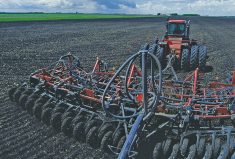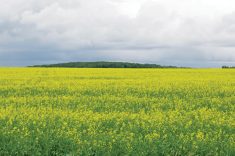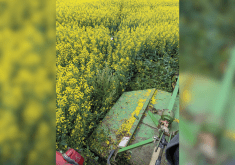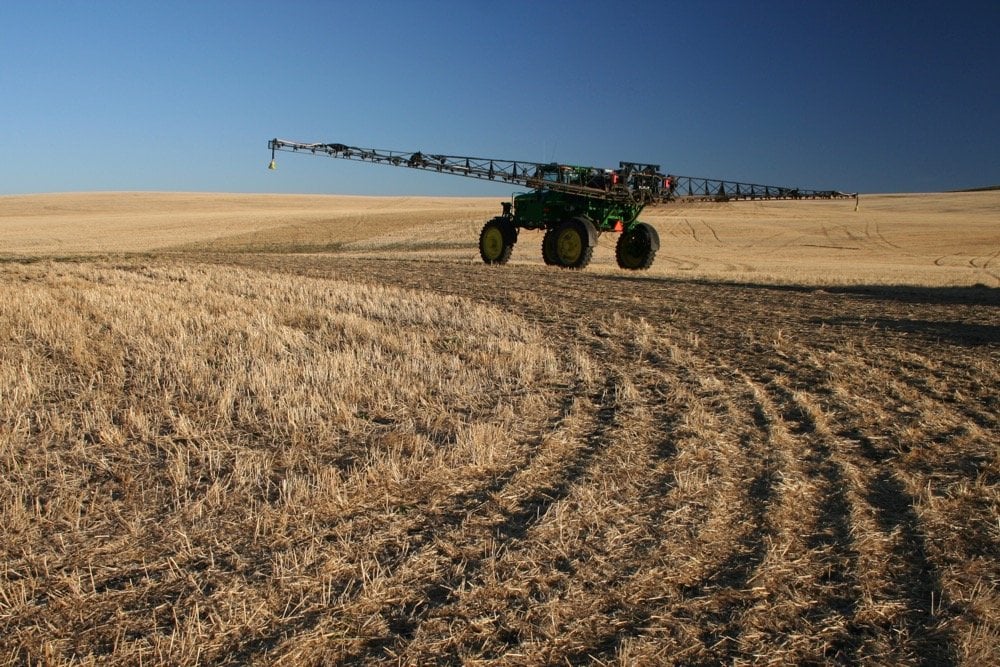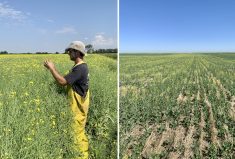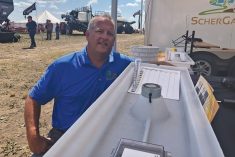In a drought year like this one, when every bushel counts, the last thing a producer wants to do is to leave grain on the ground.
But harvest loss — to the tune of up to five bushels an acre — is a costly problem for growers across the Prairies. And more often than not, the cause of it sits behind the wheel of a combine.
“There’s a lot more harvest loss than people want to admit,” said Jim Bessel, a retired harvest specialist with the Canola Council of Canada.
Read Also

Hail research hopes to benefit potato growers
Alberta research scientist measures hail storm and heat dome affects on potato crops
“The technology that we have is incredible, and the knowledge that we’re learning is impeccable. The problem is some of the basics have been forgotten. The monitor is only as good as the person who set it.”
On average, producers are going to lose a bushel an acre out the back of a combine during harvest, said Bessel, who spoke at canolaPALOOZA in late June. But a research study conducted across the Prairies from 2010 to 2012 showed harvest losses in canola that ranged between two per cent and 11 per cent, depending on the area.
- More on the Alberta Farmer: Harvest loss: An app and Top 10 tips
And a producer’s need for speed increases that loss.
“We have a lot of horsepower on these things now, so we don’t have to go through the labour of unplugging like we used to,” said Bessel. “With that horsepower, we just use a little speed. You’ve got to have efficiency, granted, but you’ve also got to get the job done right.”
Using some “simple math,” Bessel showed that at $10 a bushel and 20 acres an hour, losing one bushel an acre every hour costs a producer $200 an hour — or $1,600 over a quarter section. And in many cases, producers aren’t just losing one bushel an acre.
“Instead of 20 acres an hour, let’s go down to 15,” he said. “If we go rent, buy, lease, have a custom guy come in — do whatever to find another combine — and slow down to 15 acres an hour on that same quarter section, we actually save some time because we’re doing double.”
Even with the added expense of a second combine, he said, producers should see cost savings of around $100 an hour. Slowing down from four to three miles per hour can save an extra bushel per acre.
First step
But first, said Bessel, producers need to actually calculate their harvest loss to decide whether the gain will be worth the drop in efficiency. And the first step is to measure it.
“It’s kind of like taking a soil test,” he said. “You have to have a baseline to work from to know what type of fertility program you want to use on a particular piece of land. The same thing goes for harvesting.”
The best way to measure isn’t by “getting down there with your nose to the ground,” he said. Instead, producers should be using a drop pan.
“Drop pans are great to give you an idea of what’s happening out the back of the machine.”
One of the easiest ways to do that is by turning off the chaff spreader and straw chopper and then throwing a one-square-foot pan under the combine to capture losses as the combine passes over the pan, he said. Once the pan catches the sample, clean the sample of any debris and then weigh the remaining seed sample using a portable scale.
Next, producers will need to determine the ‘concentration factor’ — “the full width of your cut in relation to the width of the back end” — using a guide created by the canola council and the Prairie Agricultural Machinery Institute.
Once the concentration factor has been determined, the guide will show the loss per acre, at which point producers can decide whether the loss is enough to warrant any adjustments — the last step in reducing harvest loss.
At that point, producers should check for leaks, consider lowering their speed, and adjust the settings on the combine if needed, said Bessel.
“Those three steps are key to making sure you’re getting the maximum efficiency and productivity out of whatever machine you’re driving,” he said.
“We’re looking at something here that can make you a fair amount of dollars per acre, but if it’s not calibrated properly and adjusted accordingly, it can cost you a lot of money.”



